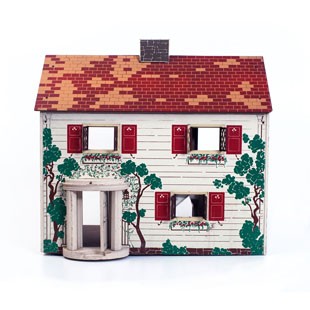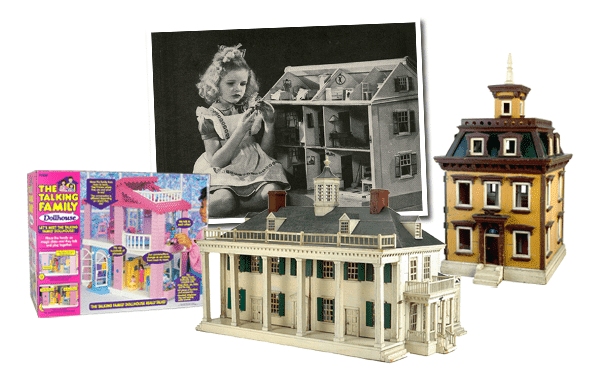
Inducted Year: 2011
The first dollhouses developed to display the miniature possessions of very wealthy Europeans in the late 1500s. These diminutive “baby houses,” as they were known, consisted of cabinets divided into compartments to display miniature furniture and household accessories. Exclusively the playthings of adults, baby houses not only showcased finely made furnishings of exotic woods, metals, fabrics, and other materials, they also served as symbols of a lady’s wealth and refined tastes.
Miniatures, however, fascinate children as much as adults, and by the 17th and 18th centuries, German toy makers produced a variation of the baby house—now called a dollhouse—for youngsters to furnish with tiny chairs and tables, beds and pallets, and tapestries and floor coverings. Mass-production methods of the 19th century allowed toy manufacturers to offer dollhouses cheaply, and more children of the growing middle class played with these miniature houses in their playrooms. By the turn of the 20th century, companies in Germany, England, and the United States supplied dollhouses and furnishings of varied scales to suit every taste and pocketbook. Dollhouses continued to be a favorite plaything of American girls throughout the 20th century and remain popular today.
Dollhouses help children learn about interior design and household management. Small hands develop manual dexterity in placing furnishings in the tiny rooms just so. While playing with their dollhouses, children begin to discern architectural styles and furnishings of varying designs and functions. Dollhouse play encourages kids to make up their own stories about families and activities as they move tiny figures from room to room and prepare the rooms for meals, clean-up, parties, bedtime, and other familiar routines.

Factoyd: The dollhouses we know today descended from 16th-century “baby houses,” wooden cabinets in which wealthy European women displayed their collections of miniatures




